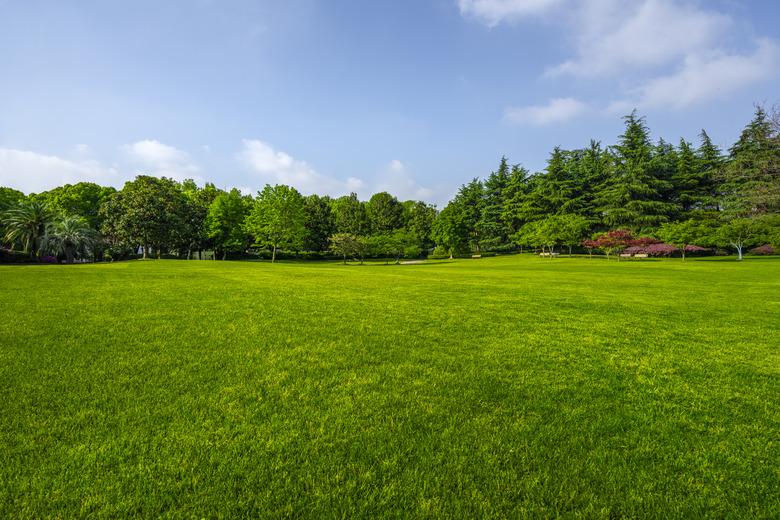The Difference Between Annual And Perennial Grass
When you think of types of grass, the turfgrass in your yard may be what you consider first. What may come as a surprise is that plants such as corn (Zea mays), wheat (Triticum spp.), rye (Secale cereale) and oats (Avena sativa) are all members of the grass family (Poaceae) as well. There are many annual grass options, but there are also many types of perennial grasses, including ornamental grasses, that are grown strictly for aesthetic purposes.
Annual vs. Perennial Plants
For beginning gardeners, it's important to know the differences between perennial and annual grasses, but also between perennial and annual plants in general. Annual plants complete their growth cycle throughout a specific period, such as the summer months, then die away when colder weather hits or their growing period ends. Plants that are classified as annuals need to be replanted every year if you want to grow them again.
Perennial plants are different from annuals in that these plants persist for successive years. Evergreen perennials retain their top growth throughout the year, while herbaceous perennials die back during colder months but grow back year after year when the appropriate growing season arrives. Many perennials grow back bigger and healthier as the years go on, so you may consider perennials to be an investment as they will remain in your garden until you choose to remove them or a disease kills them. Perennials are one path to having a beautiful garden or yard without the yearly planting that annuals require.
Annual Grass Characteristics
As mentioned, many harvest crops that are grown yearly, such as corn, barley (Hordeum vulgare) or wheat, are included in the grass family. Because these plants need to be replanted every year, they fall into the annual grass category, as does crabgrass (Digitaria spp.), which is considered a pesky weed, along with others like foxtail (Alopecurus spp. and Setaria spp.) and several species of millet (e.g., Pennisetum glaucum).
Annual grasses are an effective choice if you need to fill bare patches in your lawn quickly. The advantage of using annual grasses as fillers is that they are quick to germinate and grow, so your lawn will look good for the season.
Annual bluegrass (Poa annua) and annual ryegrass (Lolium multiflorum) are among the options for annual grass. They can be used while you wait for perennial seeds to germinate so you don't have to deal with a patchy lawn again next year.
Perennial Grass Characteristics
The lush, green lawn that you see outside your window every spring is largely composed of perennial grass. It doesn't usually need to be reseeded annually to look healthy. Grasses such as Bermuda grass (Cynodon dactylon, USDA zones 7-10), buffalo grass (Bouteloua dactyloides, zones 4-8), blue grama grass (Bouteloua gracilis) and Bahiagrass (Paspalum notatum, zones 7-11) are examples of perennial grasses that you can plant for an attractive lawn.
There are also decorative grasses that you can plant, such as bamboo (subfamily Bambusoideae), blue fescue (Festuca glauca 'Elijah Blue,' zones 4-8) and fountain grass (Cenchrus alopecuroides, zones 5-9). Many of these types of grasses can make your garden more interesting with the benefit of minimal maintenance requirements.
Before you plant, it's important to know your hardiness zone and make sure that any ornamental or perennial lawn grasses you choose are acceptable for your area. Some grasses that are considered perennials can't withstand the cold winter temperatures of northerly regions and may not grow back the following year.
References
- Agri Farming: Annual and Perennial Difference – A Complete Guide
- Oregon State Univeristy: Grass Growth and Regrowth for Improved Management
- Turf Mechanic: The Main Difference Between Annual and Perennial Grass Seeds
- USDA Natural Resources Conservation Service: Poa annua L.
- Lady Bird Johnson Wildflower Center: Bouteloua gracilis
- Missouri Botanical Garden: Festuca glauca 'Elijah Blue'
- Missouri Botanical Garden: Pennisetum alopecuroides
